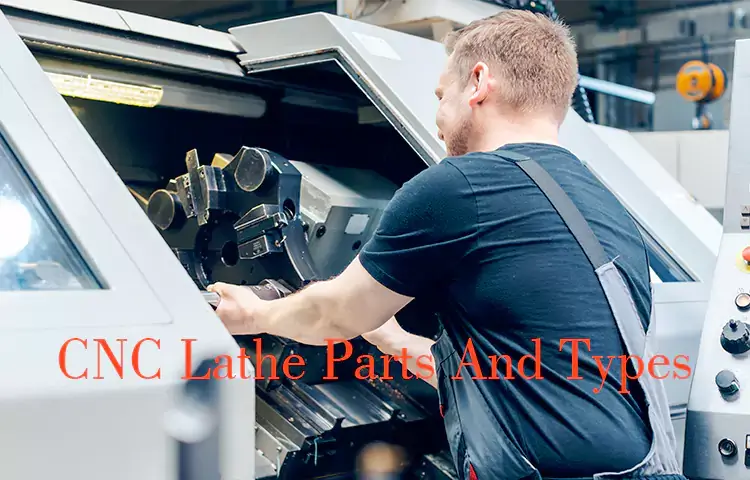CNC lathe is a powerful machine tool that is used to create high-quality shape materials by removing excess materials from the workpiece. However, you should get the best CNC Lathe types and parts to get the best out of your machine.
This guide will help you get the basics of CNC lather and turning centers. We also highlight various parts of lathe machine and their functions.
What are CNC Lathe and Turning Centers?
CNC lathe is a computer-controlled machine tool used to create flat shapes, including parts of different items. The machine does this by removing excess materials from the workpiece with the help of cutting tools.
The CNC lathe stands for Computer Numerical Control, which tells you that it needs input from a controller to run properly. This machine allows you to program the numbers of cuts, feeds, speeds, and other variables needed for cutting.
It guarantees high efficiency and high precision. It has horizontal and vertical turning centers. The vertical ones are necessary for heavy components, while the horizontal ones are for general applications.
8 Main Parts of CNC Lathe Machines
- Headstock
The headstock is a critical part of a CNC Lathe Machine, and it moves along X-axis. It is located on the left side of the machine. It holds a spindle with a rotating tool holder that helps to rotate the cutting tools. The tailstock is attached or detached from the headstock to manage the length of the workpiece while turning it on the CNC Lathe Machine bed.
- Tailstock
Tailstocks are great for supporting long, slender pieces of work during machine operations. It is essential when cutting parts accurately, without any distortion or chatter.
The industry recommends using a tailstock if your workpiece exceeds 3:1 length-to-diameter ratio, and you want it accurately mounted against the cutting tool during operation.
Tailstocks are used to hold workpieces in place during CNC machining processes. A tailstock has a cone-shaped device with an internal ball bearing that fits into the center of your shaft, holding it steady and parallel to avoid distortion when cutting objects onto its end or sides!
- Chuck (Work Holding)
This is usually a three-jaw hydraulic chuck that secures your workpiece while you are turning. It allows you to securely clamp round or irregular-shaped objects in place on the lathe bed using a separate conical surface. They are either used for OD clamping or ID clamping.
Chuck jaws are made of sturdy materials (primarily carbide), which are resistant to wear and tear even when chucked materials are very tough to cut! This ball-shaped design lets you remove your workpiece easily, even if it is difficult to reach or position.
- The Cutting Tool of CNC Lathe Machine
The cutting tool is used to remove excess materials from the workpiece. It rotates at high speeds, thus removing metal while it turns. There are several types as discussed below:
Cutting tools are classified into different types depending on their attack angles. For example, a 90° tool will remove more material but will have a smaller radius of curvature, thus creating a larger cutting edge angle, which can tend to dig in and cause the workpiece to be difficult to control during the machining process.
A preferable cutting tool depends on your needs. If a rough finish is necessary, you should use the 90° tool because it will remove a larger amount of metal. You can also use a smaller radius tip or take off less material for finishing work if desired.
- Tool Turret
The turret is a tool-carrying element that allows the user to station CNC tooling and attach it quickly while working on a machine.
A turret system helps provide quick-change access to different tools without the need to completely re-configure your machine or spend time having to unload, reload, and realign the system every time you want to switch between different parts of a job.
It can also be loaded with external tools such as threading, grooving, and turning. Usually, a Turret will have a two-axis movement.
- CNC Control Panel (MCU)
The control panel is a key element that lets you manage the machine. It includes a screen and a keyboard. It controls and monitors all motion of working parts, such as the X-axis, Y-axis, Z-axis, and CNC spindle. This makes it possible to offer a user interface for controlling your machine’s movements throughout the machining process.
The control panel also provides an easy way to manage the various communication modes of your machine. For example, G-code is a standard numerical control programming language that feeds instructions to CNC milling machines to perform their job functions.
The control panel’s display lets you see what the CNC is doing while it runs so you can manage your cut, speed, and feed rates.
You can also use the control panel to monitor several things, such as axis movement, rotational speeds of tools and spindles, or any other CNC parameters you would like to track during the machining process.
- Lathe Bed
The lathe bed is located at the bottom of the CNC lathe machine. It forms a firm foundation on which the machine is mounted. This foundation will allow for smooth, precise movement on all three axes without worrying about the base of your CNC lathe since it provides a stable platform with no flexibility.
- Foot Switch and Foot Pedals
The footswitch and pedal are located just below the operator’s side. It is used to change the direction of the machine spindle. You can move it forward (clockwise) or reverse (counter-clockwise).
Most CNC lathe machines use an electronic footswitch, which allows for precise control over speed and feed rate. The foot pedal also lets you turn the power on and off during operation.

